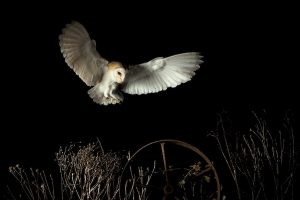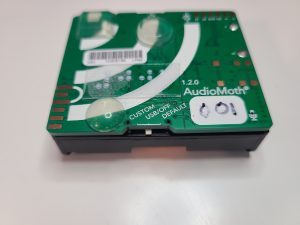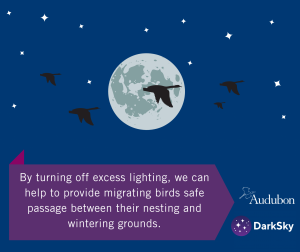



Don Ficken is a Missouri Master Naturalist and amateur astronomer who launched the Missouri chapter of Dark Sky after patrons in his community library telescope program expressed difficulty seeing the sky. He found the Eclipse Soundscapes Project through SciStarter, an online hub of citizen science projects, and participated in 2024 as a Data Collector. “It opened up a door for me because I never really thought about sound acoustics in this way,” Ficken said.
It occurred to Ficken that acoustics could help bolster Dark Sky Missouri’s efforts to study and conserve night time wildlife. One of these efforts, Lights Out Heartland, encourages homeowners and businesses to minimize artificial light usage in order to protect migrating birds from collisions due to disorienting bright lights. (A 2019 Cornell Lab survey of 125 urban cities found that the St. Louis metro area ranks as the fifth deadliest city for birds during the spring migration and the sixth deadliest for fall).
“That’s kind of a bummer to talk about with people,” Ficken admits. To “bring a positive spin to the project,” Ficken hopes to use the AudioMoths to capture the birds’ nocturnal flight calls as they fly over locations like the Gateway Arch, Shaw Nature Reserve, and Missouri Botanical Gardens. “You would think that migrating birds would go up and just stay there,” Ficken said. “That’s not actually what happens. They drop altitudes, probably because of thermals, maybe because magnetic shifts and things like that. They move up and down. And every time they shift formation, they have to make calls to get themselves reoriented. And this adds a whole new dimension that we can study through acoustics.”


Dark Sky Missouri also hopes to take more general surveys of nature at night, by placing AudioMoths in parks and natural areas. Even though parks are not typically open or staffed at night, the AudioMoths could help map the locations and movements of wildlife, creating talking points and learning opportunities for staff and visitors alike. “The trouble is that unless we reconnect people with the night, unless we get them excited about what’s out there at night, they won’t care about nature,” Ficken said. “If I can show them things like owls and bats and frogs and peepers and insects making noise, if I can show them how alive nature is at night, I think I might make them convert.”
Both initiatives will be piloted during the fall bird migration, with the goal of developing a framework for an expanded long term project. “The idea is we’re going to build this little network of people that know about AudioMoths and how they work,” Ficken said. “I’m drawing on people that already have expertise around birds. They’re really passionate. We’ll probably have a small team of maybe six to eight people doing this so we can just learn together, figure this out.”
While there are no opportunities for the general to get involved in the projects just yet, Ficken said participatory science surrounding birds and light pollution is as abundant as it is important. He cites the Globe at Night project, in which participants helped determine that global light pollution is growing 10 percent each year.
Ficken says participatory scientists can benefit from the multisensory methods employed in the Eclipse Soundscapes Project. “I think that the thing that they should think about is really the door that acoustics would be opening for them,” he said. “In other words, you don’t have to just visually look at daytime. Think about sound. Think about night.”
Check out the recorded webinar when special guest Don Ficken joined Eclipse Soundscapes to talk about how he is using AudioMoths for Nighttime Conservation. Click here to watch the recording.
